To better select a part, understand power consumption issues
BY RONALD B. KOO, MICHAEL PETERSEN, and MILES BEKGRAN
Maxim Integrated Products
Sunnyvale, CA
http://www.maxim-ic.com
More portable devices such as digital still cameras, cell phones, and portable media players are adding composite video output connections. In those devices, a video filter amp follows after the video D/A converter that generates the video signal.
The existing 3.3-V video filter amps consume 45 mW of power while processing an actual video signal. Battery life is an important issue with any portable equipment, and lowering the power consumption of the internal chips certainly helps. To help maximize battery life, the next-generation of video filter amps that can operate from 1.8 V, consume only 12 mWnearly a 70% reduction in power consumption.
Where does all the power go?
In the simplest analysis, each circuit consumes power for its own operation and for driving the load. In Fig. 1 , the power supply provides current IT to the circuit: IQ is the quiescent current for the operational amplifier and IL is the load current.
Power is calculated by multiplying the current by the supply voltage. The quiescent power consumption PQ , the load power consumption PL , and the total power consumption PT are calculated to first order with the following formulas:
PQ = VDD * IQ
PL = VDD * IL
PT = PQ + PL =VDD * (IQ +IL )
In order to minimize actual power consumption in a real application, both quiescent power consumption and load power consumption must be reduced. Lowering any combination of VDD , IQ , and IL will achieve this end.
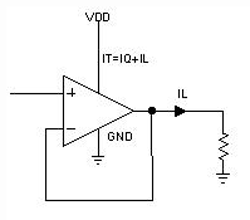
Fig. 1. Shown above is a single-supply operational amplifier with a resistive load to ground.
Usually, chip datasheets provide only quiescent current or quiescent power; they almost never describe average power consumption with a typical signal and a typical load. Quiescent power consumption is nearly useless information for any portable video filter amplifier because the circuit is either in shutdown or is fully enabled, in which case it should be driving a video signal into a video load. In order to conserve the battery, the video filter amplifier should be in shutdown if there is no video load. Enabling the video filter amplifier when there is no video load is just wasting the battery.
3.3-V video filter amp
When 3.3-V video filter amplifiers drive a video signal into a video load, their power consumption goes up, as shown in Table 1 . Average power consumption is defined as the condition in which the video filter amplifier drives a 50% flat field video signal into a 150-Ω load to ground.
The 50% flat field signal, which appears as a gray screen on a television, is used as a proxy for a typical video signal. (The load power consumption depends upon the picture content. A black screen requires the least power while a white screen require the most power.) Notice how the average power consumption of the parts is quite similar, even though their quiescent power consumption is quite different.
| Company | Part | Supply Voltage (V) | Quiescent Current (mA) | Average Current (mA) | Quiescent Power (mW) | Average Power (mW) | Output DC Bias (V) | Output Style |
| Maxim | MAX9502 | 3.3 | 5.3 | 13.5 | 17.5 | 44.6 | 1.3 | Positive dc bias |
| TI | OPA360 | 3.3 | 6 | 12.2 | 19.8 | 40.1 | 0 | Zero dc bias |
| Maxim | MAX9503 | 3.3 | 12 | 13.2 | 39.6 | 43.4 | 0.6 | DirectDrive |
Table 1. Quiescent and average power consumption of various video filter amplifiers.
The increase in power consumption due to driving a video signal into a video load greatly depends upon the output style of the video amplifier and its output dc bias. The MAX9502 and the MAX9503 require dc-coupled connections to the output load, as shown in Figs. 2a and 2b . In contrast, the Texas Instruments OPA360 can work with a SAG network, comprised of two ac-coupling capacitors, at its output (see Fig. 2c ).
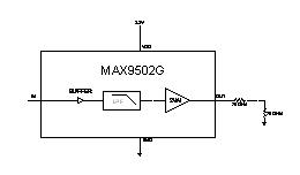
Fig. 2a. MAX9503G application circuit.
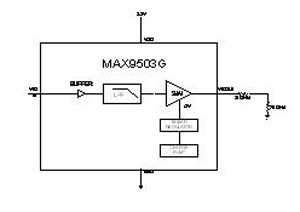
Fig. 2b. MAX9503G application circuit.
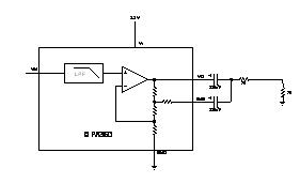
Fig. 2c. Texas Instruments OPA360 application circuit.
The video filter amplifiers must provide output dc bias current to maintain the output dc bias voltage. The more dc bias current, the greater the power consumption. The output of the MAX9502 has a 1.3-V dc bias under the average power consumption condition (see Fig. 3 ).
The output waveforms of the other parts are similar except for the dc bias voltage. The OPA360 does not have to provide any output dc bias current because the SAG capacitors break the dc connection between the output and the load.
The MAX9503 produces a video signal with much lower output dc bias than the MAX9502 because of DirectDrive technology. The MAX9503 output amplifier can pull below ground because an integrated, inverting charge pump creates a negative supply voltage. DirectDrive increases the quiescent power consumption, but the average power consumption is in the same range as the MAX9502 and the OPA360 because the load power consumption is lower.
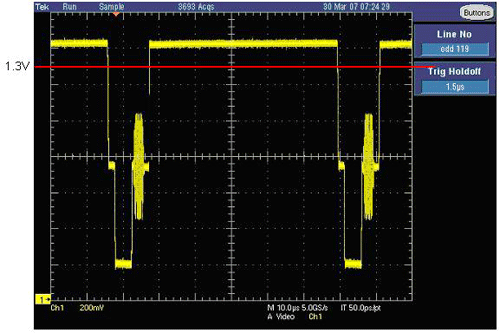
Fig. 3. Output waveform from MAX9502G. Heavy red line indicates approximate dc average of 50% flat field signal.
The next generation: 1.8-V video filter amplifiers
The MAX9509, the first part in Maxim’s newest video filter amplifier family, provides a good example of what vendors can do to dramatically reduce both average power consumption and quiescent power consumption (see Fig. 4 ). Its supply voltage, VDD , has been lowered from 3.3 to 1.8 V, which is the digital I/O voltage to which mobile phones are moving. The reduced voltage and other design tricks lower the quiescent supply current, IQ , from 12 mA to 3.1 mA (see Table 2 ).

Fig. 4. MAX9509 application circuit.
DirectDrive is an absolute requirement when the video filter amplifier operates from a 1.8-V supply. An amplifier with a voltage mode output stage must be able to swing at least 2 Vp-p to drive out a composite video signal. An amplifier operating from a single 1.8-V supply does not have enough headroom to handle a 2-Vp-p output signal.
With DirectDrive, the integrated inverting charge pump creates a 1.8-V supply, and a negative linear regulator then increases the 1.8-V supply to a quiet 1 V. With a supply voltage that spans 1-V to 1.8 V, the amplifier now has just barely enough headroom to output the 2-Vp-p video signal.
With the combination of low supply voltage, low quiescent current, and the DirectDrive output stage, the MAX9509 average power consumption is significantly lower than that of the 3.3-V generation (see Table 2 ). Furthermore, the average power consumption of the MAX9509 is actually lower than the quiescent power consumption of previous-generation 3.3-V video filter amplifiers.
| Company | Part | Supply Voltage (V) | Quiescent Current (mA) | Average Current (mA) | Quescent Power (mW) | Average Power (mW) | Output DC Bias (v) | Output Style |
| Maxim | MAX9509 | 1.8 | 3.1 | 6.5 | 6 | 11.7 | 0.6 | DirectDrive |
Table 2.
Advertisement
Learn more about Maxim Integrated





